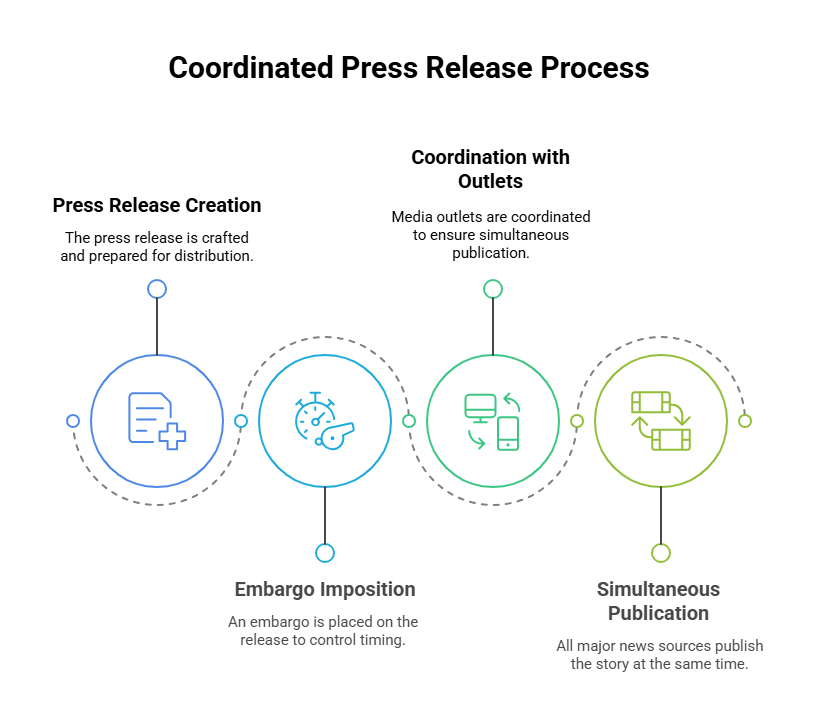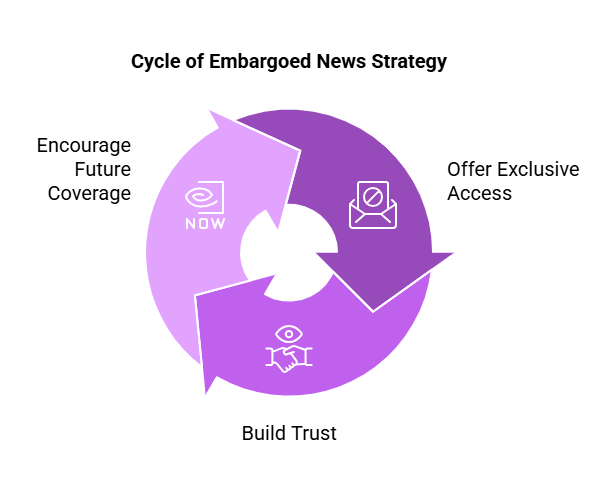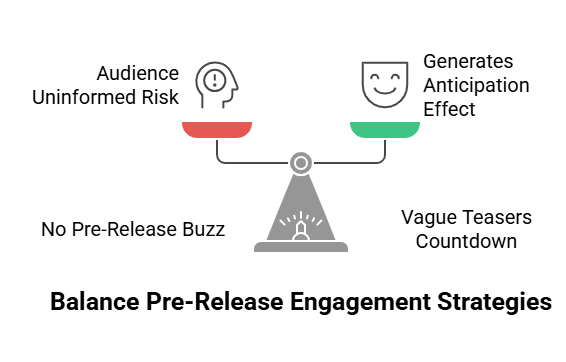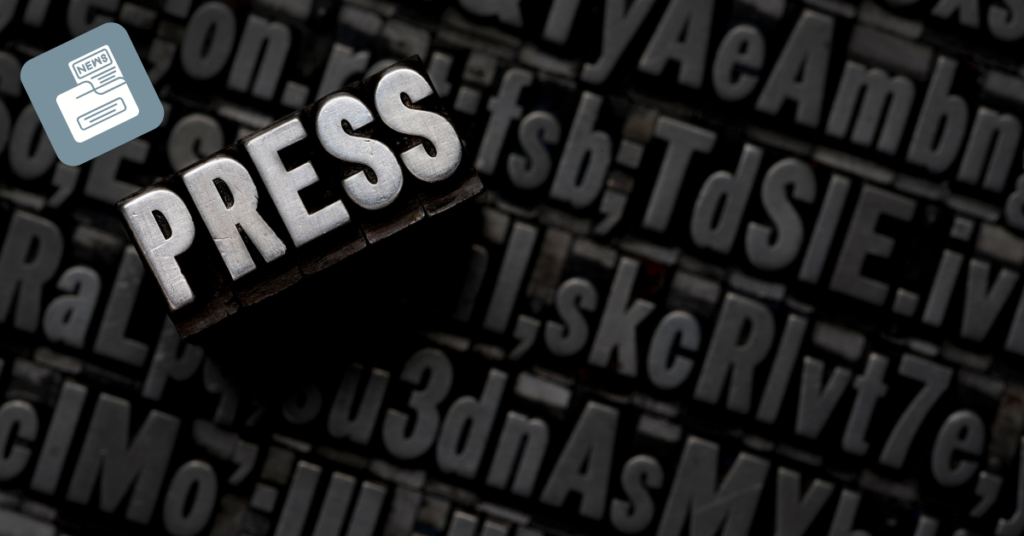Have you wanted to share a big news story, but you are worried that it might get buried under other news? It is also a problematic situation if journalists or bloggers rush to publish it without giving depth and attention. Embargoed Press Release is here to assist you.
An embargoed press release guides to share news with journalists, bloggers and PR professionals before it’s officially public. It gives them enough time to research a well-structured and well-crafted story. In this article, we are going to discuss in detail when and how your news is officially published. So, let’s take a deep dive in.
What is an Embargoed Press Release?
An embargoed press release is a news announcement that is shared with journalists and bloggers before its officially released date, that restricts you not to publish it until a specified time. This condition allows media outlets to prepare well-crafted stories. It ensures that news gets maximum coverage and attention when it is published.
PR Professionals & companies, Government and research institutions often use this press release for product launching, updates and scientific discoveries. Also, it requires trust between the organization and the journalist to prevent leaks before publishing when it controls the timing of news releases.
Examples of Embargoed Press Releases
Here are some examples of embargoed press releases which are below:
- Product launches
- Event or Award Announcement
- Government announcements
- Corporate Earning Reports
- Scientific Discoveries
- News advancements
- AI Announcements
| Features | Embargoed Press Release | Regular Press Release |
| Timing | Sent to journalists before the official release date, with a restriction on when they can publish the news. | Released immediately and can be published as soon as journalists receive it. |
| Control | The organization controls when the news goes public, ensuring synchronized media coverage. | Once released, the organization has no control over when or how the media publishes it. |
| Purpose | Allows journalists time to prepare in-depth stories, verify facts, and conduct interviews before publication. | Aims for immediate media attention and fast news distribution. |
| Media Engagement | Builds stronger relationships with journalists by giving them exclusive early access. | A standard approach that reaches a wide audience quickly. |
| Risk of Leaks | Higher risk, as a journalist may break the embargo and publish early. | No risk of leaks, as the news is meant for immediate release. |
| Common Use Cases | Product launches, scientific discoveries, government policies, corporate earnings. | General announcements, business updates, partnerships, events. |
The Purpose of an Embargoed Press Release
An embargoed press release serves as a strategic tool that helps organizations control how and when important news reaches the public. However, a regular press release allows journalists to prepare high-quality coverage before the official announcement. Here’s why companies, governments, and research institutions use embargoed press releases:
1. Ensures Well-Prepared Media Coverage
When journalists receive news ahead of time, they can research, verify facts, and craft in-depth stories. This leads to more accurate and detailed coverage rather than rushed reporting.
2. Maximizes News Impact
By coordinating the release time across multiple media outlets, an embargoed press release ensures that all major news sources publish the story at the same time.

3. Helps Control the Narrative
Embargoed press releases give organizations more time to shape their message, provide authentic materials, and prevent misinterpretation before the news goes public.
4. Strengthens Media Relationships
Giving journalists early access to information builds trust. They makes them more likely to cover the news in-depth and return for future stories.
5. Ideal for Time-Sensitive Announcements
Certain announcements like scientific discoveries, government policies, or financial reports require careful analysis. Embargoes allow reporters to understand the news fully before it is officially announced.
When to Use an Embargoed Press Release
- Product launches (e.g., Apple sharing details with tech journalists before an iPhone launch).
- Scientific research (e.g., medical studies shared before publication in journals like The Lancet).
- Corporate earnings reports (e.g., companies providing early access to financial analysts).
- Government policies (e.g., economic plans given to media before public release).
Pros and Cons of an Embargoed Press Release
Embargoed press releases can play a very significant role, but not in every situation.
Pros: Why an Embargo Can Work in Your Favor
1. Gives Journalists Time to Prepare
An embargo lets them dig deeper, fact-check, and craft well-thought-out stories, which means better media coverage for you.
Good for Complex topics like scientific discoveries, financial reports, or major product launches.
Example: A pharmaceutical company embargoes a breakthrough cancer treatment so journalists can consult medical experts before publishing.
2. Ensures a Big Media Splash
Embargoed news means multiple media outlets drop their coverage at the same time, creating a wave of attention. Instead of your news trickling out over days, it lands with maximum impact.
Good for: Major announcements, like company mergers or product reveals.
Example: A startup unveils a revolutionary AI tool, and multiple tech blogs publish detailed articles on launch day.
3. Helps Control the Narrative
When you share news under an embargo, you’re setting the tone before the public sees it. This prevents speculation, misinformation, or journalists twisting the story in a way you don’t want.
Good for: Sensitive or high-stakes announcements.
Example: A government agency releases embargoed economic data to ensure accurate reporting instead of misleading headlines.
4. Strengthens Relationships with Journalists
Journalists love exclusive access to information—it makes them feel valued. By giving them embargoed news, you’re building trust and increasing the chances that they’ll cover your future stories.
Good for: Long-term PR strategy.
Example: A company consistently offers embargoed press releases to select journalists, building strong media relationships over time.

Cons: The Risks You Need to Consider
1. The Embargo Might Get Broken
Let’s be real—not every journalist follows the rules. Some might publish early (either by mistake or to beat the competition). One leak can ruin your launch strategy.
Risk: Media coverage gets scattered, and you lose control over timing.
Fix: Only send embargoed releases to trusted journalists with a good track record.
2. Some Journalists Ignore Embargoes
Not every media outlet plays by the rules. Some refuse to honour embargoes because they want to break the news first. Others don’t like waiting.
Risk: You limit your media reach if major outlets don’t accept embargoes.
Fix: Offer exclusive interviews to top-tier journalists while embargoing the rest.
3. If Bigger News Drops, Yours Gets Ignored
You plan your big announcement… but then something bigger happens—a celebrity scandal, a political crisis, or an Apple event. Suddenly, no one cares about your story.
Risk: Your news gets buried and loses impact.
Fix: Research upcoming news cycles and choose a strategic release date.
4. No Social Media Hype Before Launch
Embargoed news means no public discussion before the release date. That means no teaser campaigns, no early buzz, and no audience engagement before the big reveal.
Risk: Your audience doesn’t get excited in advance.
Fix: Use vague teasers or countdowns without revealing details.

Should You Use an Embargoed Press Release?
Use it if you need detailed, high-quality media coverage and want multiple outlets to publish at the same time.
Skip it if you need immediate publicity or if leaks could ruin your announcement.
How to Write an Embargoed Press Release
Writing an embargoed press release requires a clear structure to ensure journalists understand the embargo conditions while keeping the content engaging and newsworthy. Follow these steps to craft an effective embargoed press release:
1. Add a Clear Embargo Notice
At the top of the document, state the embargo date and time clearly to ensure journalists understand when they can publish the news.
Example:
EMBARGOED UNTIL: [Date] at [Time] [Time Zone]
2. Craft a Strong Headline
Your headline should be concise, engaging, and newsworthy. That makes journalists eager to cover the story.
Example:
“Tech Giant XYZ to Launch AI-Powered Smartphone on August 15”
3. Write a Compelling Lead Paragraph
The first paragraph should answer the 5 Ws (Who, What, When, Where, Why) concisely. This helps journalists grasp the key message instantly.
Example:
“XYZ Corporation is set to revolutionize the smartphone industry with its AI-powered device, launching on August 15. The new technology promises enhanced user experience, advanced security, and unparalleled speed.”
4. Provide Key Details in the Body
Expand on the main announcement with relevant details such as:
✔️ Why the news matters
✔️ Quotes from key stakeholders (CEO, experts, or customers)
✔️ Statistical data or market impact
✔️ Background information
Example Quote:
“We believe this innovation will set a new industry standard,” said John Doe, CEO of XYZ Corporation.
5. Include a Call to Action (CTA)
Encourage journalists to take action, such as requesting interviews, downloading media kits, or attending an event.
Example:
“For exclusive interviews or additional details, please contact [PR Contact Name] at [Email/Phone].”
6. Add Contact Information & Boilerplate
End the release with your company’s boilerplate (a short description of your organization) and media contact details.
Example:
📞 Media Contact:
[Full Name]
[Company Name]
[Email] | [Phone] | [Website]
📌 About XYZ Corporation:
[Brief company description: mission, history, and expertise]
Final Tips for Success
✅ Keep it concise – 400-600 words maximum.
✅ Use simple, direct language – Avoid jargon.
✅ Format it professionally – Use bold subheadings and short paragraphs for readability.
✅ Send it to trusted journalists – Only distribute it to media contacts who respect embargoes.

Best Practices for Distributing an Embargoed Press Release
Distributing an embargoed press release requires a strategic approach to ensure journalists honour the embargo while maximizing media coverage. Follow these best practices to get the best results:
1. Choose Trusted Journalists & Media Outlets
Not all journalists respect embargoes, so it’s crucial to send the release only to reliable and reputable media professionals. Research and build relationships with journalists who have previously honoured embargoes.
✅ Best Practice: Create a media list of journalists who specialize in your industry and have a track record of honouring embargoes.
2. Clearly State the Embargo Date & Time
The embargo notice should be placed at the top of the press release in bold or capital letters. Be clear about the exact date, time, and time zone when the news can be published.
📌 Example:
EMBARGOED UNTIL: [Date] at [Time] [Time Zone]
❌ Avoid vague wording like “Do not publish before next week”—always specify the exact embargo details.
3. Personalize Your Outreach
Instead of mass emailing journalists, send personalized emails explaining why the story is relevant to their audience. This increases the chances of coverage.
✅ Best Practice: Address each journalist by name and mention their past work on similar topics.
📩 Example Email Subject Line:
“Exclusive: AI Startup to Unveil Game-Changing Innovation (Embargoed Until August 10)”
4. Provide Supporting Materials
Give journalists everything they need to write a compelling story, including:
✔️ High-resolution images
✔️ Fact sheets & data reports
✔️ Executive quotes
✔️ Contact information for interviews
✅ Best Practice: Create a media kit with all supporting materials in a single downloadable link.
5. Follow Up, But Don’t Pressure
Politely follow up with journalists to confirm they received the press release and offer additional information. However, avoid being too pushy.
✅ Best Practice: A simple email like, “Just checking if you need any more details for your coverage. Happy to help!” works well.
6. Monitor for Embargo Breaks
Despite clear instructions, some journalists may publish early. Keep an eye on news platforms and set up Google Alerts for your keywords.
✅ Best Practice: If an embargo is broken, act quickly by notifying other journalists so they can publish immediately to prevent one outlet from having an unfair advantage.
7. Use an Exclusive When Necessary
If you want to secure high-impact coverage, consider offering the embargoed story as an exclusive to a top-tier journalist or publication before distributing it widely.
✅ Best Practice: Target industry-leading outlets like Forbes, TechCrunch, or The New York Times for exclusive releases.
Tips
✔️ Send to trusted journalists to avoid embargo leaks.
✔️ State the embargo clearly at the top of the release.
✔️ Provide all necessary materials to help journalists craft a strong story.
✔️ Follow up professionally without being pushy.
✔️ Monitor publications to ensure the embargo is honoured.
By following these best practices, you can maximize media coverage while maintaining control over how and when your news is published.

Risks and Challenges of Embargoed Press Releases
While embargoed press releases can help organizations control media coverage, they also come with risks and challenges. Here’s what you need to watch out for:
1. Risk of Embargo Breaks
Biggest Challenge: A journalist or media outlet might publish the news before the embargo date, either accidentally or intentionally.
Example: A tech blog leaks product details before an official Apple event, reducing the impact of the official announcement.
Solution: Only share embargoed releases with trusted journalists who have a track record of honouring embargoes.
2. Loss of Control Over the Narrative
Even with an embargo, media outlets may interpret the news differently, leading to unintended narratives.
Example: A scientific study under embargo gets misinterpreted, leading to misleading health claims.
Solution: Provide clear, concise messaging and offer spokesperson interviews to clarify details.
3. Journalists Might Ignore the Embargo
Some journalists prefer to break the news first rather than wait for an embargo to lift, which might result in them ignoring your release altogether.
Example: A major newspaper refuses to cover a startup’s announcement because they want an exclusive, not an embargoed release.
Solution: Build strong media relationships and consider offering exclusive interviews to key journalists.
4. Risk of Losing Public Interest
If the embargo period is too long, the news may lose relevance or be overshadowed by bigger stories.
Example: A government policy under embargo for too long gets buried under breaking political news.
Solution: Choose a reasonable embargo period (usually 24-72 hours) to keep the story fresh.
5. Limited Media Coverage
Some journalists and outlets refuse to honour embargoes, limiting the number of potential media placements.
Example: A journalist prefers real-time news and doesn’t cover embargoed stories.
Solution: Have a backup plan—if the embargo fails, be ready to release the news immediately.
Tips
✔️ Carefully choose media contacts to reduce embargo risks.
✔️ Be prepared for embargo breaks and act quickly if needed.
✔️ Ensure clarity in messaging to avoid misinterpretation.
✔️ Don’t keep the embargo period too long, or you risk losing momentum.
Conclusion
An embargoed press release is a powerful tool for controlling the timing and impact of important news. By giving journalists early access to information, organizations can ensure well-prepared, high-quality media coverage. However, embargoes come with challenges, such as the risk of leaks, loss of control over the narrative, and limited media interest.
To make the most of embargoed press releases, it’s crucial to work with trusted journalists, provide clear messaging, and have a backup plan in case the embargo is broken. When used strategically, embargoed press releases can generate maximum media attention and credibility, helping businesses, researchers, and governments share their news effectively.
FAQs
1. What is the purpose of an embargoed press release?
An embargoed press release allows journalists to prepare detailed coverage before the official announcement, ensuring accurate and well-researched reporting.
2. How long should an embargo last?
Typically, 24-72 hours is an ideal embargo period. However, for scientific studies or government policies, embargoes may last a few weeks before the official release.
3. What happens if a journalist breaks the embargo?
If a journalist publishes the news before the embargo lifts, organizations can:
✔️ Immediately release the information publicly to minimize damage.✔️ Reevaluate their media list and avoid sharing embargoed news with unreliable sources in the future.
4. Can I offer an exclusive and an embargoed press release at the same time?
Yes, but they should be given to different outlets. A major publication can receive an exclusive, while others get the embargoed version later.
5. Should I always use an embargo for important news?
No. If you need immediate media attention, a regular press release is better. Embargoes are best for complex stories that require in-depth reporting.
